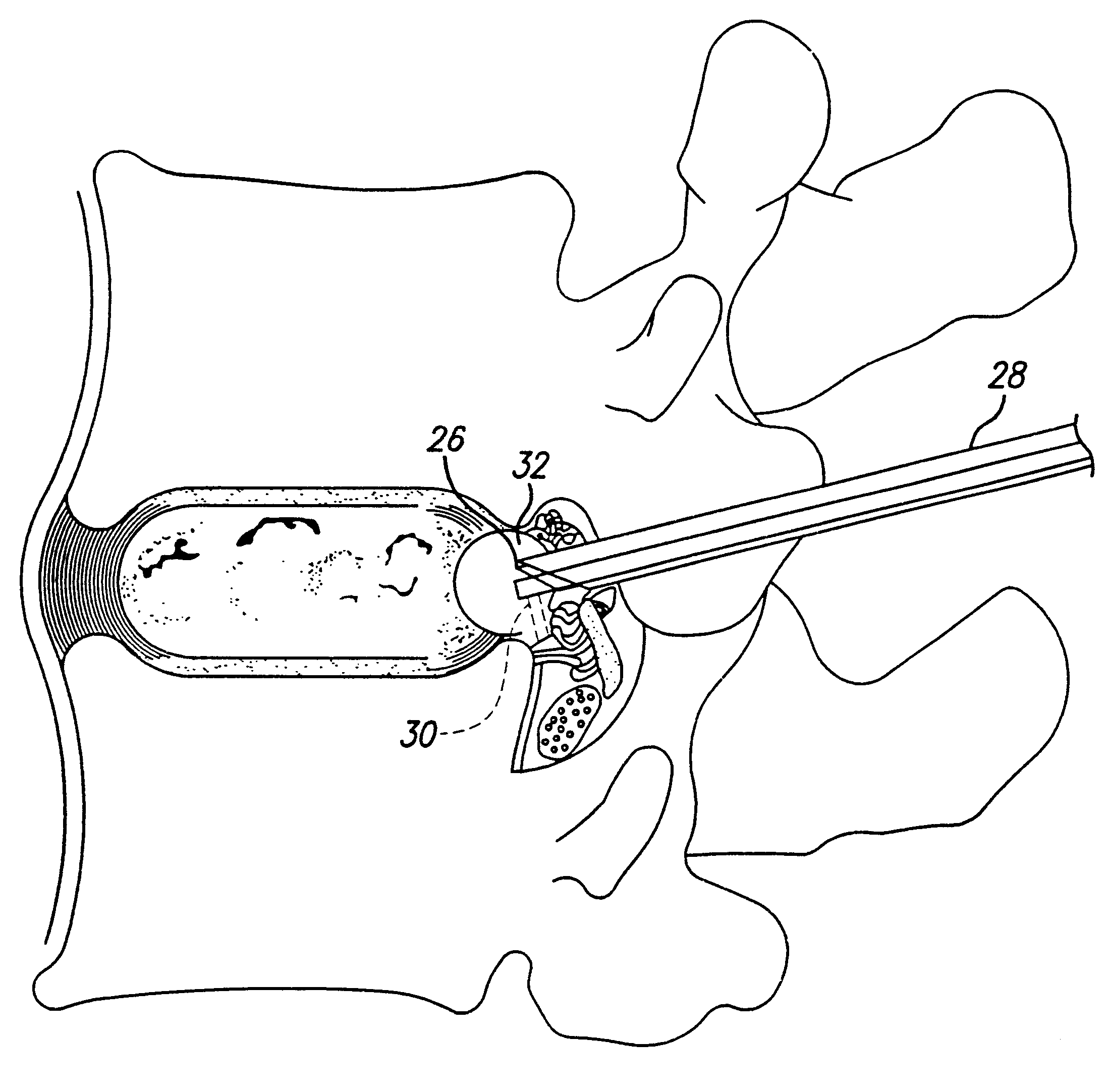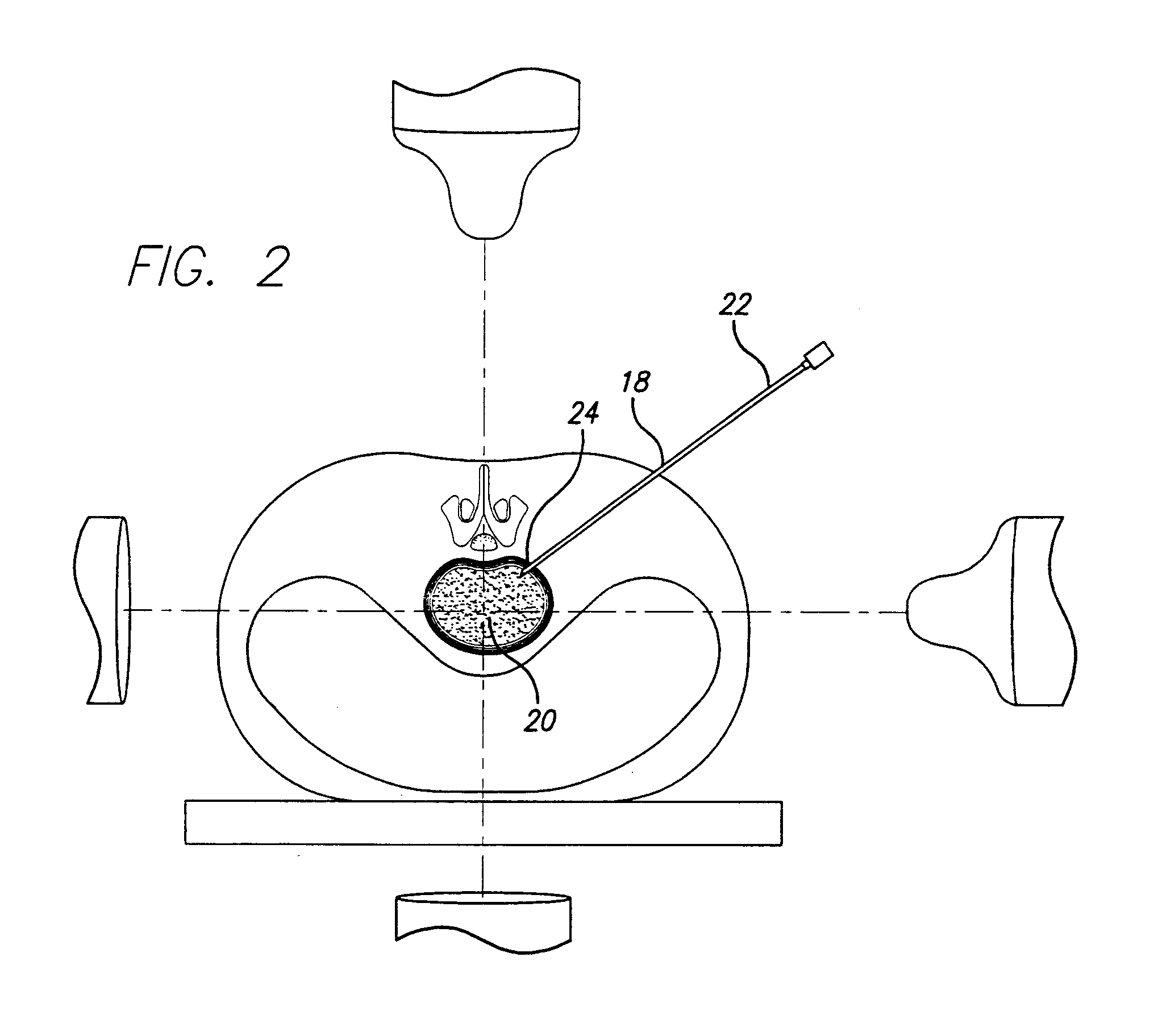Method and apparatus for endoscopic spinal surgery
- Summary
- Abstract
- Description
- Claims
- Application Information
AI Technical Summary
Benefits of technology
Problems solved by technology
Method used
Image
Examples
Embodiment Construction
According to the present invention, there is disclosed a method and apparatus for performing percutaneous spinal transforaminal endoscopic interbody fusion using modular discoid shaped graft components.
In the following description, for the purposes of explanation, specific devices, component arrangements and construction details are set forth in order to provide a more thorough understanding of the invention. It will be apparent to those skilled in the art, however, that the present invention may be practiced without these specifically enumerated details and that the preferred embodiment can be modified so as to provide other capabilities, such as the capability for the remote control to operate with other devices. In some instances, well-known structures and methods have not been described in detail so as not to obscure the present invention unnecessarily.
Referring first to FIG. 1, an approach to percutaneous transforaminal endoscopic lumbar surgery is demonstrated. As seen in A, B...
PUM
 Login to View More
Login to View More Abstract
Description
Claims
Application Information
 Login to View More
Login to View More - R&D
- Intellectual Property
- Life Sciences
- Materials
- Tech Scout
- Unparalleled Data Quality
- Higher Quality Content
- 60% Fewer Hallucinations
Browse by: Latest US Patents, China's latest patents, Technical Efficacy Thesaurus, Application Domain, Technology Topic, Popular Technical Reports.
© 2025 PatSnap. All rights reserved.Legal|Privacy policy|Modern Slavery Act Transparency Statement|Sitemap|About US| Contact US: help@patsnap.com



